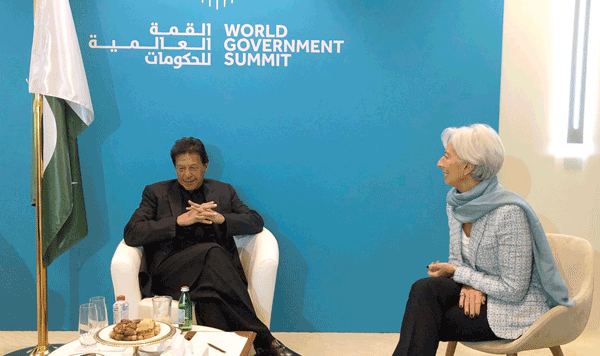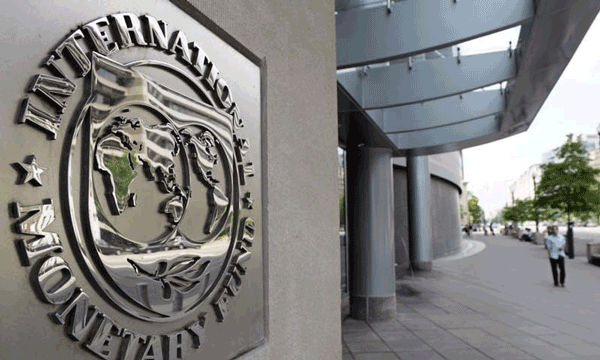The Reluctant Fund-amentalist
By Abid Qaiyum Suleri | Cover Story | Published 6 years ago

Dr. Abid Qaiyum Suleri heads the Sustainable Development Policy Institute.
The exact terms and conditions of the $6 billion staff-level agreement between the Pakistan Government and the International Monetary Fund (IMF) will unfold over the next few months, once the programme is approved by IMF’s board of executives. The approval is subject to a timely implementation of prior actions (meeting qualitative and quantitative targets) and confirmation of the international partners’ financial commitments (rolling over existing debts from friendly countries). The prior actions are not in the public domain yet and this lack of information has prolonged the economic uncertainty that was supposed to come to an end with the government going to the IMF.
To gain a clearer understanding of the current situation, it is essential to go back in time and take a look at the sequence of events that brought us to May 2019, when Pakistan started mission-level negotiations with the IMF.
A major factor that contributed to the Pakistan Muslim League-Nawaz’s (PML-N’s) electoral success in the 2013 general election was its commitment to improve power generation and reduce power outages. It did not make any commitments on renewable energy, coal-powered energy, or energy tariffs. Five years down the road, the situation of power outages has improved substantially. The share of coal (dirty energy) has increased in the country’s energy mix, as has the share of capacity-charge payment (fixed payment made by the government to energy generators irrespective of how much it buys from them) and tariff subsidies in our energy circular debt. The PML-N fulfilled its electoral promise of supplying uninterrupted electricity.
Pakistan was in its 21st International Monetary Fund (IMF) programme from 2013 to 2016. This period saw some fiscal disciplining, but it evaporated once the programme concluded. There were concerns about the projected fiscal and current account deficit at the time, but these were smoothed over by a perception management campaign conducted by the then finance minister, Ishaq Dar.
After the departure of Dar, concerns about the state of the economy re-surfaced rapidly. There were demands of declaring a “fiscal emergency” and that was the time when, in an attempt to control the balance of payments, the then prime minister, Shahid Khaqan Abbasi, began the process of depreciating the rupee and levied regulatory duties on non-essential imports. The PML-N presented six federal budgets in its five-year tenure. The last budget, while giving unrealistic tax concessions to salaried and corporate taxpayers, put restrictions on non- (tax return) filers’ ability to purchase vehicles and real estate beyond a specified limit. In the run up to 2018 elections, Pakistan was out of the electricity crisis, but was facing a visible financial crisis.
The major achievement of the Pakistan Tehreek-i-Insaf (PTI) as an opposition party was to run a successful campaign against the PML-N leadership’s alleged corruption. The major factor contributing to the PTI’s electoral success in 2018, was its commitment to bring about an overhaul in Pakistan’s economy, provide the public with shelter and livelihoods, and retain the growth momentum by curbing corruption and corrupt practices. The PTI, as an opposition party, had categorically opposed going to the IMF, the depreciation of the rupee, and the rise in petroleum prices. Its supporters had high hopes and expectations that once in power, it would be able to turn the state of economy around, without relying on the conventional methods of previous governments.

Cornered tiger? Imran Khan and Christine Lagarde at the World Government Summit in the UAE.
It is clear now that the PTI had underestimated the problems facing Pakistan’s economy. The overvaluation of the rupee during the first four years of the PML-N government subsidised imports and made exports uncompetitive, resulting in a balance of payments crisis. It also had a negative impact on the domestic industry. To support the value of the rupee during this period, the State Bank of Pakistan (SBP) had encashed the government’s ‘hard borrowed’ $ 24 billion in the open market.
Moreover, when the PTI came to power, CPEC’s first phase was concluding, which meant that there were no Chinese loans to be spent on infrastructural projects. After a dip of a couple of years, global fuel prices had more than doubled at that time. Expensive fuel, capacity charges to power producers and tariff subsidies to distribution companies, had ballooned the energy circular debt to a whopping Rs 1.6 trillion (more than Pakistan’s annual defence budget).
The tax revenue target was bound to be missed owing to the unrealistic tax relief in the PML-N’s last budget, the Supreme Court’s decision not to deduct advance tax on mobile phone top-up cards, and the reduction in revenue collection at the import stage (due to regulatory duties).
To top it all, loss-making state-owned enterprises – whose privatisation had been resisted by the PTI when it was in the opposition –also contributed to growing fiscal deficit.
One can argue that most of the above mentioned issues facing Pakistan’s economy when the PTI came into power, were not unique. However, the PTI’s commitment to address them without resorting to conventional methods (getting a bailout from the IMF and accepting its allied conditions) was unique.
The incumbent government resisted going to the IMF for the first seven months and tried to manage the balance of payments by mobilising support from friendly countries, the voluntary curbing of imports, depreciating the rupee, and cutting non-developmental expenditures etc. Throughout this period, the government did not explicitly write off the IMF as an option.
The quantum of the twin deficit (fiscal and current account deficits) and the impact of voluntary contractionary policies were aggravated further due to the ambiguity on part of the government, of whether it intended to turn to the IMF or not. This had the impact of slowing down the economy. The real estate sector ceased to be lucrative for investors after Khaqan Abbasi’s government discouraged profiteers and, as a result, most investors bought US dollars. This led to the dollarisation of the economy and put pressure on the supply of dollars in the open market. The current account deficit numbers reflect that another hard borrowed $ 20 billion was encashed by the SBP from 2017 to March 2019, to keep the value of rupee (supply of dollars) stable.
The brief presser issued by the IMF after the conclusion of staff-level negotiations in May 2019, says that the programme aims to support the Pakistani government’s strategy for stronger and more balanced growth, by reducing domestic and external imbalances, improving the business environment, strengthening institutions, increasing transparency, and protecting social spending.
In other words, the programme will support Pakistan in reducing the current account deficit, the domestic imbalances, the energy circular debt and providing autonomy to regulatory bodies including the SBP, OGRA, and NEPRA, and letting the market demand and supply determine the exchange rate of the rupee against the dollar. In regards to insulation against any side-effects of the above-mentioned measures, the programme talks about strengthening social spending (the Benazir Income Support Programme, and new initiatives including Ehsas, Kifalat etc.)
 In fact, the IMF had suggested the same measures to all previous governments, but none of them were able to fulfil these. All, except the last IMF programme, remained inconclusive, as none of the governments – except the previous one – could fulfil their commitments. Yet even the previous government had to seek 16 waivers on commitments that it had made but could not deliver on.
In fact, the IMF had suggested the same measures to all previous governments, but none of them were able to fulfil these. All, except the last IMF programme, remained inconclusive, as none of the governments – except the previous one – could fulfil their commitments. Yet even the previous government had to seek 16 waivers on commitments that it had made but could not deliver on.
Coming back to the current programme, the IMF suggests an ambitious structural reform agenda that may supplement economic policies to rekindle economic growth. According to the presser, the priority areas for structural reform include: “Improving the management of public enterprises (read privatisation), strengthening institutions and governance (read autonomy to regulators), continuing anti-money laundering and combating the financing of terrorism efforts (read clearance from FATF), creating a more favorable business environment, and facilitating trade.”
The tricky reform that the IMF presser highlights is that the federal government will engage provincial governments in exploring options to rebalance the current arrangements in the context of the forthcoming National Financial Commission (NFC). All the above would require not only the political will by the government, but also a political consensus among all mainstream political parties.
To achieve a political consensus (read charter of economy), the government would not only have to keep the political temperature low, but also engage the opposition, especially the Sindh government, in the context of prior action on the NFC.
The PTI wrongly stigmatised the previous IMF programme in its ‘anti-corruption’ campaign and now, it is facing the music. The current opposition parties should keep in mind that while criticising the PTI’s failure to turn the economy around, they must be careful not to over-stigmatise the forthcoming IMF programme.
With or without the IMF, the problems of energy circular debt, loss-making public-sector organisations, and a low tax base, have to be addressed nevertheless. If this can be done under the forthcoming programme, then there may not be any need for future governments to go to the IMF, at least for some time. But if these issues remained unaddressed, then the opposition as the ‘government in waiting’ should be ready to turn to the IMF yet again, whenever it comes to power.


